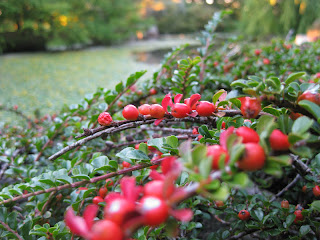In the winter, when deer are desperate and will eat anything in order to survive, how do you protect your plants?
We have found the answer, a locally made deer repellent – Deer Defeat.
Nevia Dusman and the Deer Defeat team (located in Dutchess County, so they have the same problems with deer ravaged gardens as we do!) did an experiment with control groups one winter.
Nevia explains, “To test the spray we covered one set of evergreen bushes with burlap and a second set with wire netting.”
Then the team sprayed a third group of evergreens that were closest to the woods with Deer Defeat all natural deer, rabbit and groundhog repellent just before the first winter storm and left them uncovered.
“The location was perfect to observe the deer on a daily basis in their natural environment. The ground was coated with snow so we could also see their tracks clearly.” Nevia says.
The evergreens that were protected with burlap did not deter the deer. The hungry deer managed to push the burlap up and gain access to the branches underneath.
The evergreens that were covered with wire netting also got eaten! The deer managed to separate the netting, stick their heads in and munch away.
“The evergreens that were sprayed with Deer Defeat all natural deer, rabbit and groundhog repellent were not touched by the deer whatsoever. We saw plenty of deer at a distance from the sprayed evergreens at different times of day and the evening, but it was as if these evergreens were “invisible” to them.”
“We suggest you spray all the shrubs and any trees you want to protect with a good coating of repellent to get them ready for a long winter. You can use Deer Defeat, even if the temperature is below freezing.” Nevia says. But when it is freezing, make sure you shake the spray bottle periodically so oils in the mixture don’t clog the sprayer.
Deer Defeat will not damage your plants; instead, it will protect them from the harsh temperatures and strong winds during the cold winter months. The manufacturing process of the all natural ingredients in Deer Defeat Repellent gives it an anti desiccant property, which coats and protects the leaves from harsh sun, wind and cold without leaving visible residue.
Winter use: Shake Deer Defeat well before each use. Spray in late November or before first snowfall. Make sure to coat the entire evergreen with Deer Defeat repellent. Reapply again in late January or early February.
Store Deer Defeat deer repellent products in the original container in a cool dry area, but protect from freezing.
But what if you’re not around during the winter? Or you’re busy, or you hate being outside in the cold?
Not to worry, we can do it for you!
This winter Victoria Gardens is offering a Winter Deer Spray Program, which consists of 2 applications of the long-lasting and locally made Deer Defeat products, spaced about two months apart, starting in January. The cost for the standard program is $100 for a winter of deer protection.
(If we did your fall clean up, we already sprayed Deer Defeat once in November.)
If you are doing your own deer spray program that is this schedule you should follow: November, January and March. (Be vigilant about spraying in the early winter and early spring. It will help deter deer for the whole season, because they have good memories, and without deer defeat, they will return to plants they have eaten before.)
Note: You can apply Deer Defeat repellent even in the coldest temperatures; it will not burn the leaves. The coating of the repellent will protect their leaves from the strong wind and cold. The only sensitive evergreen is Rhododendron. We suggest not to spray it during the extreme temperatures when the leaves are curled up looking more like a round pencil, it is better to wait for a day which is a bit warmer and the leaves are more open. If deer are attacking them and you must spray them during the extreme cold weather, you will notice little rust like spots on the leaves in the spring. Nothing to worry about, they will recover perfectly.
Read more about our GADD Winter Deer Protection Program.






























































